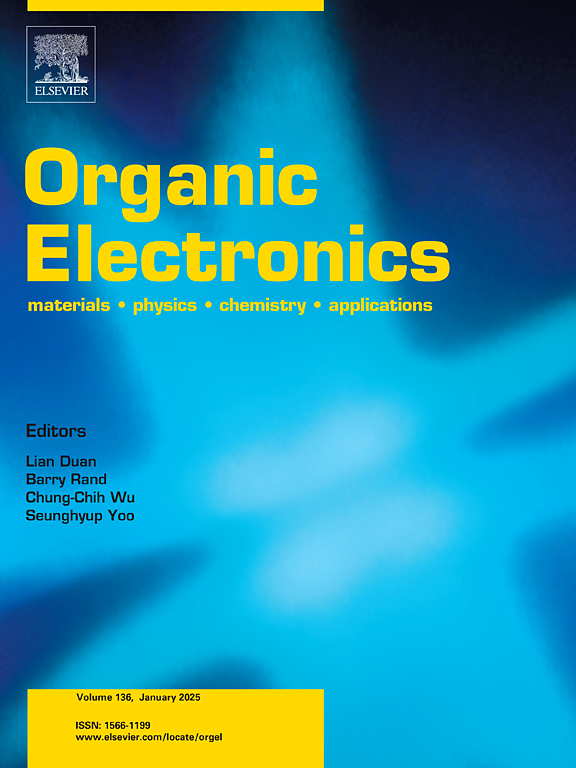Kinetics of photogenerated carbon dangling bonds in organic photovoltaic thin Films: An EPR study
IF 2.6
4区 工程技术
Q3 MATERIALS SCIENCE, MULTIDISCIPLINARY
引用次数: 0
Abstract
We report an investigation of the early kinetics of photogenerated carbon dangling bond (CDB) formation and annealing in organic photovoltaic bulk heterojunction (BHJ) thin film blends under oxygen- and moisture-free conditions, using X-band electron paramagnetic resonance (EPR) spectroscopy. The study focuses on donor:acceptor BHJ blends of PCE12:PCBM and PCE12:ITIC films, where PCE12 is PBDB-T. The time evolution of CDBs in such drop-cast BHJ films irradiated at 300 nm is monitored. The early kinetics of CDB formation, critical for understanding OPV degradation mechanisms, is studied. Theoretical analysis of the defect growth mechanism suggests a monomolecular defect creation model where the defect count follows a power-law t β with irradiation time t, where β ∼ 0.55–0.58, in excellent agreement with the theoretically expected value of β = 1/2. This model is compatible with CDB formation by the holes in donor sites adjacent to acceptors, likely assisted by energy released from quenching of nearby excitons by the holes, elucidating the physical mechanism underlying CDB formation. This is significant for designing improved materials, which mitigate defect creation, and consequently advancing the development of stable OPV systems.

有机光伏薄膜中光生碳悬空键动力学:EPR研究
利用x波段电子顺磁共振(EPR)光谱研究了有机光伏体异质结(BHJ)薄膜共混物在无氧和无湿条件下光生碳悬空键(CDB)形成和退火的早期动力学。研究重点是PCE12:PCBM和PCE12:ITIC薄膜的供体:受体BHJ共混物,其中PCE12为PBDB-T。监测了在300 nm辐照下滴铸BHJ薄膜中CDBs的时间演变。研究了CDB形成的早期动力学,这对理解OPV降解机制至关重要。缺陷生长机理的理论分析表明,单分子缺陷产生模型中,缺陷计数随辐照时间t服从幂律t β,其中β ~ 0.55-0.58,与理论期望值β = 1/2非常吻合。该模型与邻近受体的供体部位的空穴形成CDB相容,可能是由空穴淬灭附近激子释放的能量辅助形成的,阐明了CDB形成的物理机制。这对于设计改进的材料,减少缺陷的产生,从而促进稳定的OPV系统的发展具有重要意义。
本文章由计算机程序翻译,如有差异,请以英文原文为准。
求助全文
约1分钟内获得全文
求助全文
来源期刊

Organic Electronics
工程技术-材料科学:综合
CiteScore
6.60
自引率
6.20%
发文量
238
审稿时长
44 days
期刊介绍:
Organic Electronics is a journal whose primary interdisciplinary focus is on materials and phenomena related to organic devices such as light emitting diodes, thin film transistors, photovoltaic cells, sensors, memories, etc.
Papers suitable for publication in this journal cover such topics as photoconductive and electronic properties of organic materials, thin film structures and characterization in the context of organic devices, charge and exciton transport, organic electronic and optoelectronic devices.
 求助内容:
求助内容: 应助结果提醒方式:
应助结果提醒方式:


